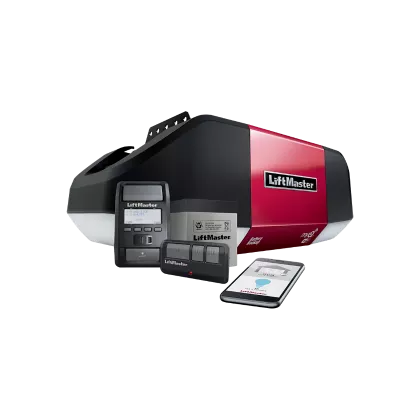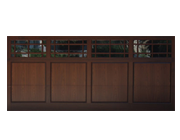There are so many different types of garage door openers that it can make shopping around for a new one a bit of an experience. One area where you’ll find lots of difference is the drive type. This part of the opener is like your car’s transmission - it’s what makes the whole thing go. Each type of drive has its own benefits and drawbacks, too.
Not sure which type of drive is right for your needs? It varies from home to home based on a number of factors, including the space inside your garage, your needs when it comes to operating noise, and much more. Below, we’ll walk you through what you should know.

Getting Down to Basics
The first major difference between the types of garage door openers is that some use DC and some openers use AC. A DC motor is slower at the beginning, speeds up during the middle of the cycle, and then slows down near the end of the cycle. The AC motor maintains a single speed. However, both types open and close the garage door at roughly the same speed
The real issue here isn’t speed, but sound. DC motors are quieter. Plus, a DC motor can have a battery back-up while an AC cannot.
The Mechanics
On a door with a central trolley, one that is installed in the middle of the door, the belt that raises and lowers the door is made with rubber reinforced with metal wires, similar to the way modern car tires are made. Some belts may use different reinforcing materials, such as fiberglass or polyurethane.
The belt runs along a T‑shaped track mounted to the garage ceiling. To ensure proper operation, the tension can be adjusted using a wrench. Powering the entire thing, you’ll have either a ½ or ¾ HP (horsepower) motor. The ½ HP is sufficient for a single door, but the ¾ HP will be needed for a double door.
Remember - the opener only replaces the effort you would have expended to open and close the door. What this means is that the door should always be properly balanced. While a single door might weigh as much as 100 pounds, it should feel like it weighs around eight pounds and you should be able to open it with a single hand. If not, the door is unbalanced and should be repaired immediately.
The Pros of the Belt‑Drive Opener
As mentioned, the primary benefit of a belt‑drive versus a chain drive is in operating noise reduction. A rubber belt can reduce the noise involved with opening and closing your garage by up to 30% over a chain drive. So, for the quietest operation possible, think about an opener like the LiftMaster’s 8550W.

However, it goes deeper than just the rubber belt. The drive’s entire design is focused on reducing sound through fluid movement and oscillation elimination. The result is a garage door opener that operates smoothly and quietly
Perhaps the only drawback with this motor is the fact that it costs more than a bottom of the line chain‑driven model. Of course, most homeowners find that the sound reduction is well worth the slight price increase, particularly if there’s a bedroom above or beside the garage.
Tips for Making Your Garage Door Quieter
Secure a Wood‑Mounted Opener.
Installing a strip of hard rubber between the steel angle and the wood joist will reduce noise transmission. It’s also worth mentioning that vibration isolation kits can do wonders here, as well.
Make sure you are using nylon rollers.
In comparison to metal rollers, nylon ones can offer dramatic noise reduction. Plus, they come in both black and white.
Lubricate all the steel parts.
Make sure to lubricate all metal parts twice per year. You’ll need the right lubricant for the job, though. Somethin like 5W30 engine oil will do the trick. However, make sure that you never lubricate the rubber belt. This will lead to damage. The drive sprockets are lubricated at installation, and that is all that will be needed for up to seven years.
Insulating the bedroom for sound.
A bedroom above the garage with a wooden floor can amplify sound. Install carpeting or rugs to dampen the transfer of sounds from the garage to your room.
Install a jackshaft door opener.
A jackshaft opener can be installed beside the garage door if there’s enough space. This eliminates sound transferred through the ceiling.
Each of the tips above will help to make your garage door opener quieter, but each situation is unique. If you’re struggling with noise and not sure what to do about it, talk to an experienced technician at B&M Garage Door to discuss installing a jackshaft or switching to nylon rollers.
Ready to Make a Switch?
Go ahead and contact us at 905-569-9133
We are the experts who understand everything about the various garage door openers on the market. We can help you make an informed decision about your next opener purchase or help you quiet down your current opener. We can also email you a quotation.








Add new comment